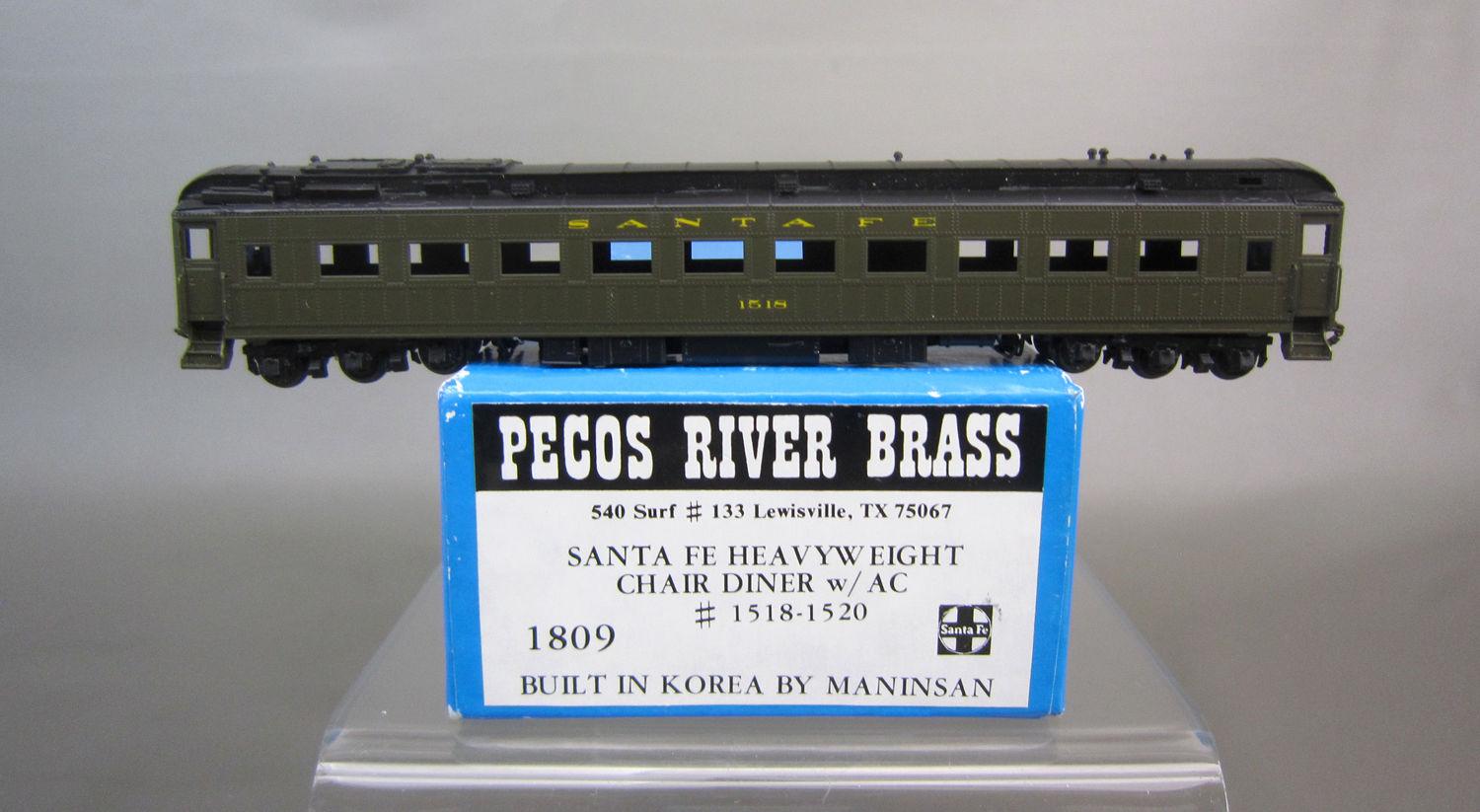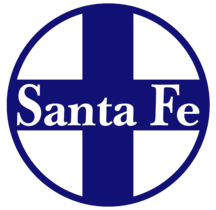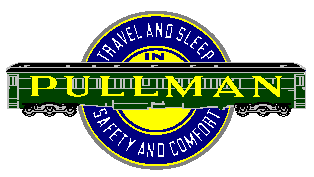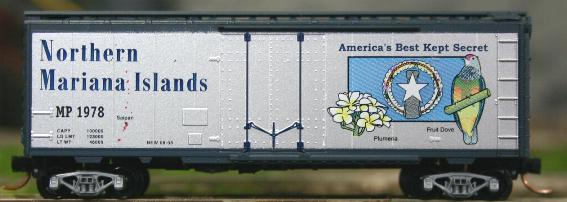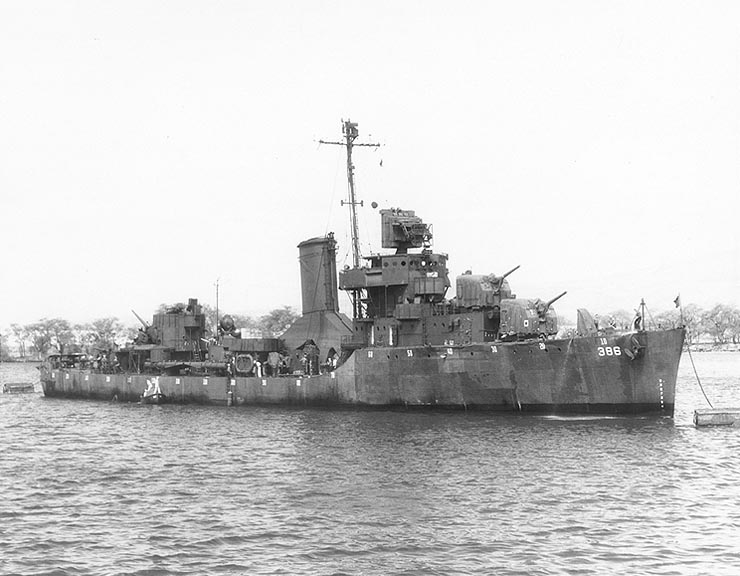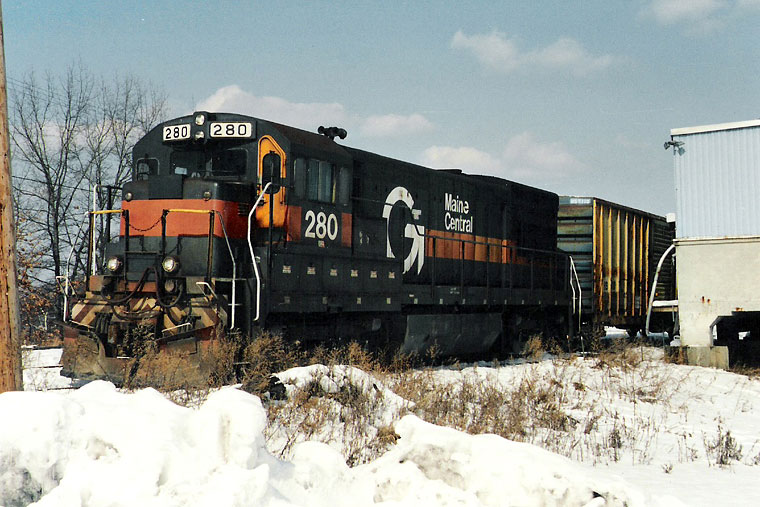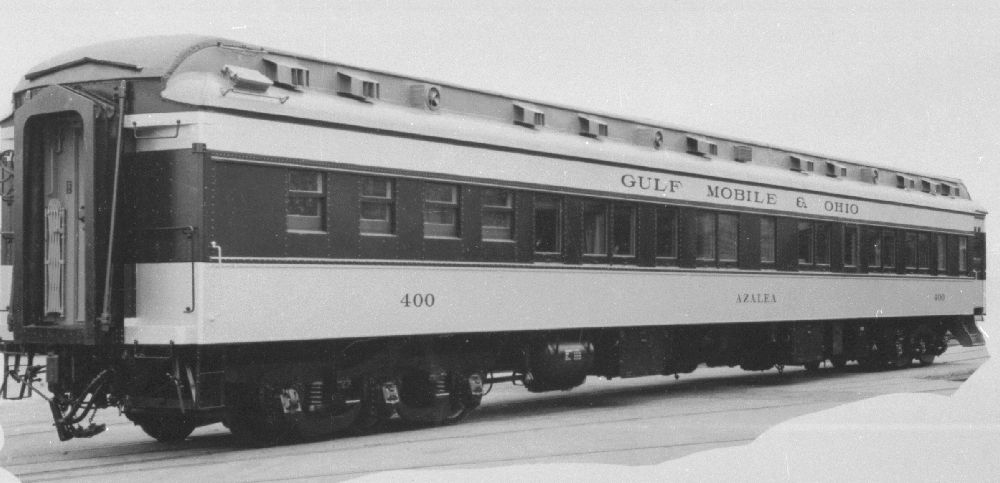Pecos River Brass - 1809 - Passenger Car, Heavyweight, Pullman Diner - Santa Fe - 1518
| Stock Number | 1809 |
| Brand | Pecos River Brass |
| Manufacturer | Maninsan |
| Body Style | Pecos River Brass Models |
| Prototype Vehicle | Passenger Car, Heavyweight, Pullman Diner (Details) |
| Road or Company Name | Santa Fe (Details) |
| Road or Reporting Number | 1518 |
| Paint Color(s) | Green |
| Coupler Type | MT Magne-Matic Knuckle |
| Coupler Mount | Body-Mount |
| Wheel Type | Injection Molded Plastic |
| Wheel Profile | Small Flange (Low Profile) |
| Item Category | Rolling Stock (Freight) |
| Model Type | Passenger Car |
| Model Subtype | Heavweight |
| Model Variety | Chair Diner |
| Prototype Region | North America |
| Prototype Era | NA Era II: Late Steam (1901 - 1938) |
| Scale | 1/160 |
Model Information:
Beautiful hand painted detail brass models of North American prototypes.
Prototype History:
In 1868. the Pullman Co. unveiled the Delmonico, a plush dining car named for the famous New York City restaurant. The age of dining on the rails was born. The 1940s and 1950s were the golden age of train travel and also the pinnacle of railroad dining car operations. For many passengers, the ambiance of the dining car was the reason they rode the train. Each railroad had its own fleet of dining cars where travelers were made to feel like royalty as they gazed over menu offerings that included roast leg of lamb with mint sauce, oven-roasted chicken, or pan-fried trout. Freshly baked desserts and fine wines often accompanied dinner. Food was prepared by specially trained chefs and served by attentive uniformed waiters.
Pullman was the leading manufacturer of the heavyweight passenger car in the 1st half of the 20th century. These cars were made of concrete and steel and were VERY heavy.
Pullman was the leading manufacturer of the heavyweight passenger car in the 1st half of the 20th century. These cars were made of concrete and steel and were VERY heavy.
Road Name History:
The Atchison, Topeka and Santa Fe Railway (reporting mark ATSF), often abbreviated as Santa Fe or AT&SF, was one of the larger railroads in the United States. Chartered in February 1859, the railroad reached the Kansas-Colorado border in 1873 and Pueblo, Colorado, in 1876. To create a demand for its services, the railroad set up real estate offices and sold farm land from the land grants that it was awarded by Congress. Despite the name, its main line never served Santa Fe, New Mexico, as the terrain was too difficult; the town ultimately was reached by a branch line from Lamy.
The Santa Fe was a pioneer in intermodal freight transport, an enterprise that (at one time or another) included a tugboat fleet and an airline (the short-lived Santa Fe Skyway). Its bus line extended passenger transportation to areas not accessible by rail, and ferryboats on the San Francisco Bay allowed travelers to complete their westward journeys to the Pacific Ocean. The ATSF was the subject of a popular song, Harry Warren & Johnny Mercer's "On the Atchison, Topeka and the Santa Fe", written for the film, The Harvey Girls (1946).
The railroad officially ceased operations on December 31, 1996, when it merged with the Burlington Northern Railroad to form the Burlington Northern & Santa Fe Railway.
Read more on Wikipedia.
The Santa Fe was a pioneer in intermodal freight transport, an enterprise that (at one time or another) included a tugboat fleet and an airline (the short-lived Santa Fe Skyway). Its bus line extended passenger transportation to areas not accessible by rail, and ferryboats on the San Francisco Bay allowed travelers to complete their westward journeys to the Pacific Ocean. The ATSF was the subject of a popular song, Harry Warren & Johnny Mercer's "On the Atchison, Topeka and the Santa Fe", written for the film, The Harvey Girls (1946).
The railroad officially ceased operations on December 31, 1996, when it merged with the Burlington Northern Railroad to form the Burlington Northern & Santa Fe Railway.
Read more on Wikipedia.
Item created by: George
on 2024-04-02 20:34:18
Last edited by: George on 2024-04-02 20:35:17
If you see errors or missing data in this entry, please feel free to log in and edit it. Anyone with a Gmail account can log in instantly.
Last edited by: George on 2024-04-02 20:35:17
If you see errors or missing data in this entry, please feel free to log in and edit it. Anyone with a Gmail account can log in instantly.


